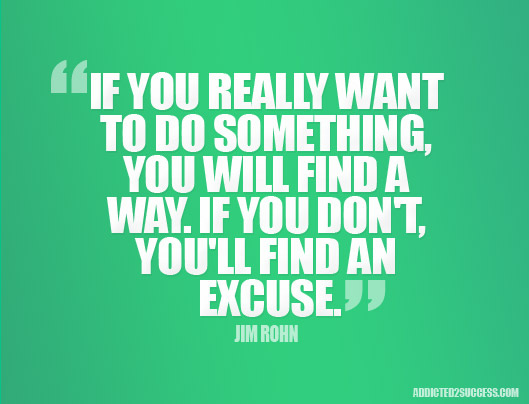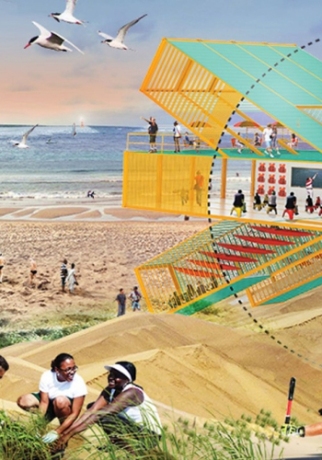-
Michel Fontaine
As President of Medialand Inc., as well as throughout his incredible 26 years in the business, Mr. Fontaine has consistently demonstrated the vision, dedication and diligence necessary to be considered among the best. Medialand Inc. is a company which specializes in land reclamation and site enhancements. Their consultants have expertise in landscape architecture, landscape planning, eco-engineering and visual simulation. They are capable of intervening effectively in all stages of a project, from the creation of the design concept to the preparation of the plans and specifications, as well as the monitoring of the site. Medialand’s aim is to promote sustainable development and bio-diversity and to create a value-added environment with an enhanced ecologic, economic and recreational value. During his educational career, Michel earned a Bachelor of Arts degree in Landscape Architecture and a Master’s degree in Urban Planning from the University of Montreal. He is a member of the Canadian Society of Landscape Architects and the Canadian Land Reclamation Association. In the time away from his busy schedule, Michel greatly enjoys gardening.
Personal Links
Pages
-
Recent Posts
Archives
Categories
Meta
Are there some changes you want to make to your landscaping at home?
Medialand Inc.
 Michel is the President of Medialand Inc., a Landscape Architecture company specializing in land reclamation and site enhancements.
Michel is the President of Medialand Inc., a Landscape Architecture company specializing in land reclamation and site enhancements.
With a Bachelors Degree in Landscape Architecture and a Masters Degree in Urban Planning from the University of Montreal, Michel continued to build more than a decade of experience before launching his company in 1998. Michel is now acting as a team leader in the new department of Landscape Architecture and Site Rehabilitation
Since it’s inception, Michel draws on his seasoned expertise in Landscape Architecture to extend an array of services, encompassing pubic and private site planning, quarry rehabilitation planning, as well as project estimates and supervision.
Evidencing his unwavering drive for excellence, Michel is holds affiliation with the Canadian Society of Landscape Architects and the Canadian Land Reclamation Association.
Basic Design Principles and Styles for Garden Beds
Contributors: Kerry Meyer
This article will cover the basics types of garden beds and plant layout.
Gardens should always be considered highly personal works of art. As in any kind of art, taste will vary greatly with every person having a different opinion of what constitutes beauty. I think understanding basic design principles, is important for two reasons. First, if you know the rules you can break them in an intelligent way. Second, it helps give you a comfort level that what your design won’t be a complete disaster. However, in the end the only thing that really matters is that you love your garden – your opinion is the most important one.
There are two basic types of garden beds, island beds and borders, and two basic styles of gardens, formal and informal. We will start by covering the two types of beds and then move onto the two styles.
A border is anchored by a backdrop and I think these beds are easier to visualize than island beds, at least for me, since the background will help define the size of your new bed. The backdrop might be a house, a hedge row, a fence, or anything else that gives you a fairly solid background. Borders are viewed from only one side.
A flower border is generally, but not always, long and narrow. How deep your bed needs to be will partially depend on how long the bed is. The proportions of the bed are important. A short bed doesn’t need to be as deep, a 3 foot by 8 foot bed will look right at home. A longer bed will need more depth, if possible. A 12 foot by 100 foot bed will look proportional.
Most home gardens are more likely to have beds that fall between 5 and 50 feet long. In this case depth should range between 3 and 6 to 8 feet deep. Any bed that is deeper than 4 feet (you can only reach so far) will need to have access to the interior of the bed for weeding and other maintenance purposes. Paths or stepping stones are common ways to provide access. Here are some examples of borders:



The photo on the left shows a narrow border at the Missouri Botanic Garden, in the center is a border along my front porch, and on the right is a great orange-toned border.
Island beds, on the other hand, are not anchored by a backdrop and can be viewed from all sides. They often have a center anchor. This anchor isn’t necessarily right in the middle. It can be offset to one side for an asymmetrical look. Center anchors can be anything from a tree, shrub or large perennial to a piece of statuary or a large container, even a bench or trellis/arbor can work as a center anchor.
Read the rest of the article at: https://www.provenwinners.com/learn/basic-design-principles-and-styles-garden-beds
Connect with me professionally!
https://www.linkedin.com/pub/michel-fontaine/22/37a/600
Genivar –> WSP
 WSP is one of the world’s leading professional services firms, working with governments, businesses, architects and planners and providing integrated solutions across many disciplines. The firm provides services to transform the built environment and restore the natural environment, and its expertise ranges from environmental remediation to urban planning, from engineering iconic buildings to designing sustainable transport networks, and from developing the energy sources of the future to enabling new ways of extracting essential resources. It has approximately 15,000 employees, mainly engineers, technicians, scientists, architects, planners, surveyors, other design professionals, as well as various environmental experts, based in more than 300 offices, across 35 countries, on every continent.
WSP is one of the world’s leading professional services firms, working with governments, businesses, architects and planners and providing integrated solutions across many disciplines. The firm provides services to transform the built environment and restore the natural environment, and its expertise ranges from environmental remediation to urban planning, from engineering iconic buildings to designing sustainable transport networks, and from developing the energy sources of the future to enabling new ways of extracting essential resources. It has approximately 15,000 employees, mainly engineers, technicians, scientists, architects, planners, surveyors, other design professionals, as well as various environmental experts, based in more than 300 offices, across 35 countries, on every continent.
Landscape Design: Seven Tips for Beginners – www.bhg.com
Idea 1
Make a list of needs and wants. Do your kids need a play space? Do you want to grow vegetables? Would your family gather on a patio? Do some very rough sketches of the yard with thoughts of where you want to place things; it’s a great organizing principle for landscape design for beginners. “These aren’t master plans, just ideas,” says Marianne Lipanovich, author of the Big Book of Garden Designs (Oxmoor House, 2008). “The one I did for our front-yard overhaul was literally a few lines and a couple of circles, but my husband understood the plan, and we went ahead with formal planning out on the site. You can easily play around with ideas without a lot of time and commitment.”
Idea 2
 Study the sun and wind patterns. You might want to place a patio on the west side of the house, but it will get lots of afternoon sun, which means dinnertime in August won’t be relaxing — just hot. And wind whistling around a corner will quickly extinguish a fire pit. Those are common mistakes in landscape design for beginners. Your design should take into account what the sun and wind do at different times of the day and year. “You’ll need solutions to temper the problem,” Lipanovich says.
Study the sun and wind patterns. You might want to place a patio on the west side of the house, but it will get lots of afternoon sun, which means dinnertime in August won’t be relaxing — just hot. And wind whistling around a corner will quickly extinguish a fire pit. Those are common mistakes in landscape design for beginners. Your design should take into account what the sun and wind do at different times of the day and year. “You’ll need solutions to temper the problem,” Lipanovich says.
Idea 3
Live with it for a while. Coming to quick conclusions about your yard can lead to choices that don’t work in the long term. “In our yard, there are certain areas where you want to go and sit that I wouldn’t have thought of when we first bought it,” Lipanovich says.
Read the rest of the article at: http://www.bhg.com/gardening/landscaping-projects/landscape-basics/landscape-design-for-beginners/
Treating Trees as Actual Infrastructure
 By Roman Kruglov
By Roman Kruglov
A couple of weeks ago my brother sent me a link to a story on WNYC about the variable mortality rates for trees that were planted as part of New York City’s Million Trees initiative. We’ve seen the uneven outcomes of planting efforts like these before, and New York is no exception. Dedicated (volunteer) citizens who water and care for the trees are often the ones responsible for their survival, particularly during harsh summer months.
The reporter, Matthew Schuerman, found that Parks Department data from 2009 indicated a 3.4 percent mortality rate for the trees, which would be well within the expected range. According to WNYC’s analysis of more recent data from 2011 (obtained through a Freedom of Information Request), however, the mortality rate is as high as 12.1 percent.
I’m all too familiar with stories like this, and I scrolled to the bottom to see what commenters had to say. One stuck out at me:

This was written by Majora Carter, an urban revitalization strategy consultant who established Sustainable South Bronx and Green for All, and she had a point. A great point. What would it mean to treat trees and soils, known as green infrastructure here and elsewhere, as actual infrastructure? It certainly wouldn’t, for example, mean leaving planning in the hands of people without any training in urban forestry or tree biology, or leaving their care entirely up to volunteers or homeowners. As Carter points out, imagine if that was our approach to planning and maintaining other forms of infrastructure, such as pipes and sewers?
I asked three people with tons of experience in trees and in urban forestry – who are also frequent contributors to this blog – to pick just five things that would be necessary if we actually treated urban trees and soils (green infrastructure) as seriously as we do pipes, sewers, roads, and more (grey infrastructure).
Read more: http://sustainablecitiescollective.com/deeproot/285541/treating-trees-actual-infrastructure
Embracing Complexity
“It’s going to unbearable outside in the southern half of the U.S. by the end of the century,” said Harriet Tregoning, director of the office of economic resilience, U.S. Department of Housing and Urban Development (HUD), at a lecture on Rebuild by Design at the National Building Museum (NBM).
Explaining why we need new approaches to resilience, she said in just the first twelve years of this century, we’ve already seen the two costliest natural disasters in U.S. history (Hurricanes Katrina in 2005 and Sandy in 2012), along with more frequent and extreme events, such as wildfires, droughts, and flooding — which scientists say all result from climate change. Consider also the trend towards urbanization, particularly in coastal areas, and you have a precarious mix of higher exposure to risk for ever-increasing populations in some of the most vulnerable areas of the country.
Post-disaster rebuilding in the U.S. has historically focused on rebuilding the same systems that failed in the first place, as quickly as possible. But “the challenges of our time are bigger and more complex than our conventional linear thinking is capable of tackling,” said Nancy Kete, managing director at the Rockefeller Foundation.
After Sandy, the foundation was able to gain more traction for their progressive recommendations, rather than the more conventional “rebuild as usual.” The high visibility of their 2010 Rising Currents exhibition, a collaboration with New York’s Museum of Modern Art (MoMA), also helped. Together with HUD, they now seek new solutions that embrace complexity.
The foundation and HUD came together to organize the Rebuild by Design competition, which has allocated nearly $1 billion to 10 Sandy-affected areas in New York and New Jersey. As James Russell describes in Al Jazeera America, the competition seeks to“engage communities to develop a more porous relationship between land and water that recognizes the dynamism of rising seas and more violent storms.”
Read more: http://dirt.asla.org/2014/07/01/embracing-complexity/
Landscape Urbanism…Decoded?

The Master Plan for the Central Delaware reflects an increasingly mainstream acceptance of landscape as the framework for urban design. image © Kieran Timblerlake / Brooklyn Digital Foundry
“What is landscape urbanism? Is it a method, a practice, or a result? What does this term mean to contemporary practitioners of landscape architecture?”
These were questions that inspired the latest installation of OLIN’s Theoretical Symposium, which I moderated with my colleague Katy Martin. Katy and I both knew that this would be a daunting topic, raising all manner of opinions and added questions, so we broke up the discussion into a few key stages. In the days before the symposium even kicked off, we posed these questions to the studio and collected the answers. On the day of the event, we started things off not with the questions, but with a history of “landscape urbanism”—the people, projects, and practices that influenced the concept and led to the coining and popularization of the term itself. We then suggested four definitions of landscape urbanism and used each as a framework for the studio’s theories and questions:
1.) Landscape urbanism as diagnosis
2.) Landscape urbanism as framework and process
3.) Landscape urbanism as green infrastructure
4.) Landscape urbanism as landscape + urbanism
Our format was straightforward, and our goal was clear: to see if our studio could help clarify a potent but increasingly elusive term in landscape discourse.
The development of landscape urbanism as a theory and practice is the result of an evolving body of work by a number of people. In the 1870s, forefathers of landscape architecture such as Fredrick Law Olmsted and Ebenezer Howard demonstrated how the many environmental problems that plagued American cities could be mitigated by planned open space which served both infrastructural and recreational purposes. In the 1960s, Ian McHarg wrote Design with Nature, the first book to describe an ecologically sound approach to the planning and design of communities. However, it was not until the late 1990s that Charles Waldheim popularized the term landscape urbanism. In his 2006 book, The Landscape Urbanism Reader, Waldheim defines the term as follows: “Landscape urbanism describes a disciplinary realignment currently underway in which landscape replaces architecture as the basic building block of contemporary urbanism.”
Landscape Urbanism as Diagnosis
Landscape urbanism as diagnosis relates specifically to Charles Waldheim’s academic analysis of post-industrial North American cities, described in many of Waldheim’s lectures and writings, such as his 2001 book Stalking Detroit. Waldheim describes the existing condition of metropolitan dispersion, which he argues has been caused by the decline of manufacturing, decentralization of transportation, and continued suburbanization. The term further recognizes the emergence of un-designed landscapes in the voids left by dispersion and questions whether the redevelopment of a dense, architecturally defined urban core is possible or even desirable in a declining, post-industrial city like Detroit.
A figure ground of Detroit’s increasingly porous urban core illustrates the reality of decline and dispersion to which early landscape urbanists like Charles Waldheim were responding. Source: Stalking Detroit, Waldheim et al, 2001
Landscape Urbanism as Framework and Process
Landscape urbanism as framework and process also has strong academic underpinnings but asserts more pragmatically the role of ecological, economic, and social dynamics within cities. In doing so, it critiques both regulatory planning and the fixed, physical master plan that has traditionally dominated urban design. From this perspective, landscape is an appropriate lens for understanding the city not merely because it deals with natural materials, but because it explicitly addresses systems, process, and infrastructure.
The last two definitions of landscape urbanism also present landscape as the framework for urban design, but for different reasons.
Landscape Urbanism as Green Infrastructure
Landscape urbanism as green infrastructure focuses on achieving environmental performance through landscape measures. In this reading, landscape becomes not a metaphor for urbanism but an engineered device with strictly defined functions and measurable benefits.
Patchwork, OLIN’s award-winning entry to the Living City Design Competition, is an example of how green infrastructure within landscapes can be used as a framework for urban design.
Landscape Urbanism as Landscape + Urbanism
The term “landscape + urbanism” refers to the increasingly blurred boundaries between landscape urbanism, landscape architecture, and urban design. Partner Dennis McGlade raised the question, “Does this imply the the work of landscape design in an urban setting is new and unique to the modern age? In fact, it is quite ancient.” Partner and CEO Lucinda Sanders, however, linked the emergence of landscape urbanism as a shift in leadership, pointing out that:
“Choices about the form and quality of urban environments have traditionally been made from a perspective of dominance, governance, or finance and therefore from the architectural viewpoint; minimal attention has been given to the complexities of the external environment as a potential and primary generator of urban design. In the world of landscape urbanism, nuances of landscapes and their interface with architectural edges are regarded as influential in shaping urban environments at the least. When most successful, landscape becomes a primary source for making decisions about the urban environment, thereby inextricably intertwining landscapes with architecture. A direct result of this shift is the role of landscape architect as a leader or co-generator of urban design.”
Expressing this tension between transforming and merely re-branding landscape architecture, Landscape Designer Andrew McConnico concluded that “To the extent that [landscape urbanism] encourages the profession and practice to question our motives and challenge our role, it is probably helpful. To the extent that we recycle old concepts, theories and ideas while presenting them as a new movement, it is probably unhelpful.”
The discussion lasted long into the evening and will likely continue at the desks and in the halls of the studio. The next symposium in OLIN’s Theoretical Basis series is a discussion on systems and ecology. We look forward to another great conversation.
Read more at http://www.theolinstudio.com/blog/landscape-urbanism-decoded/






